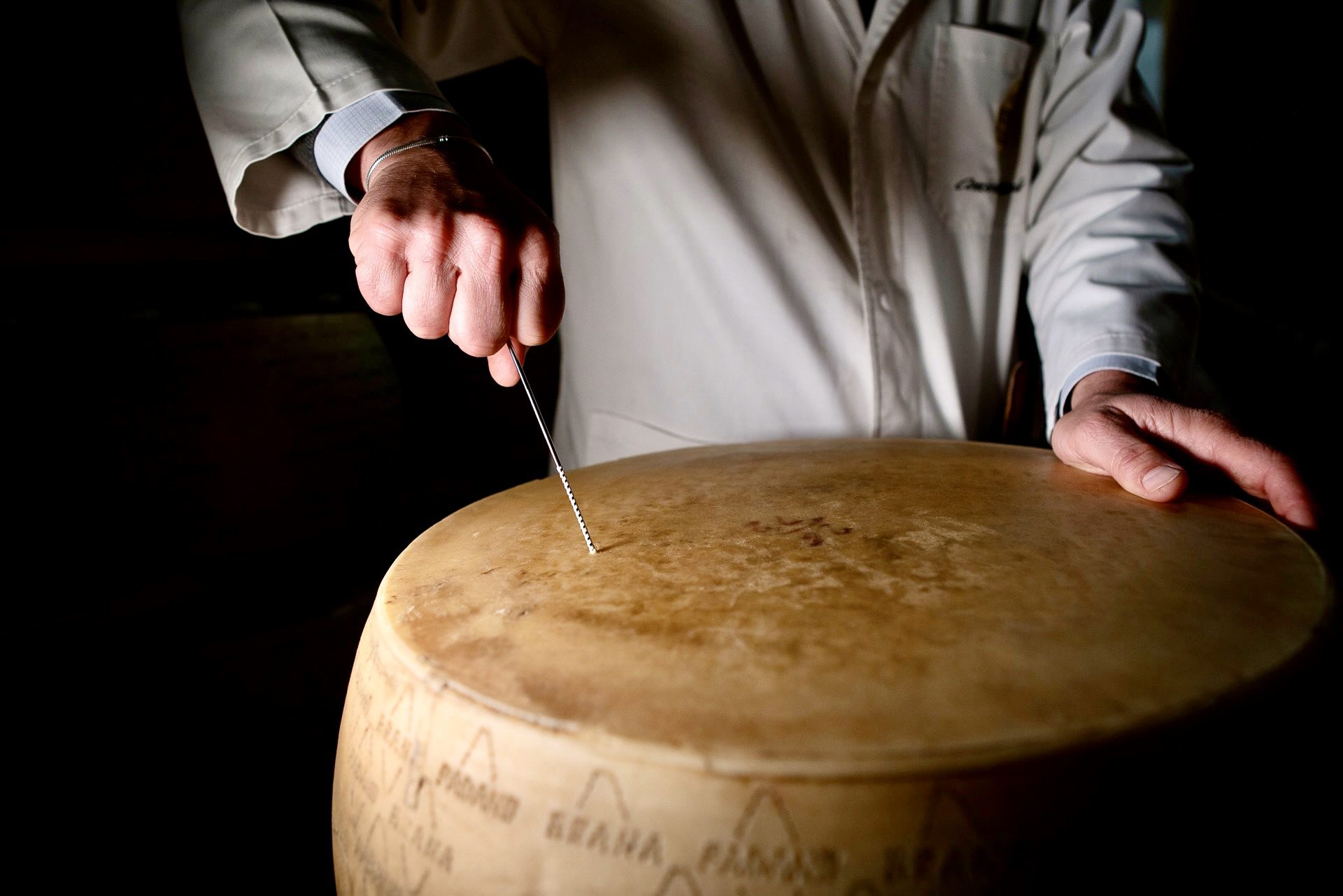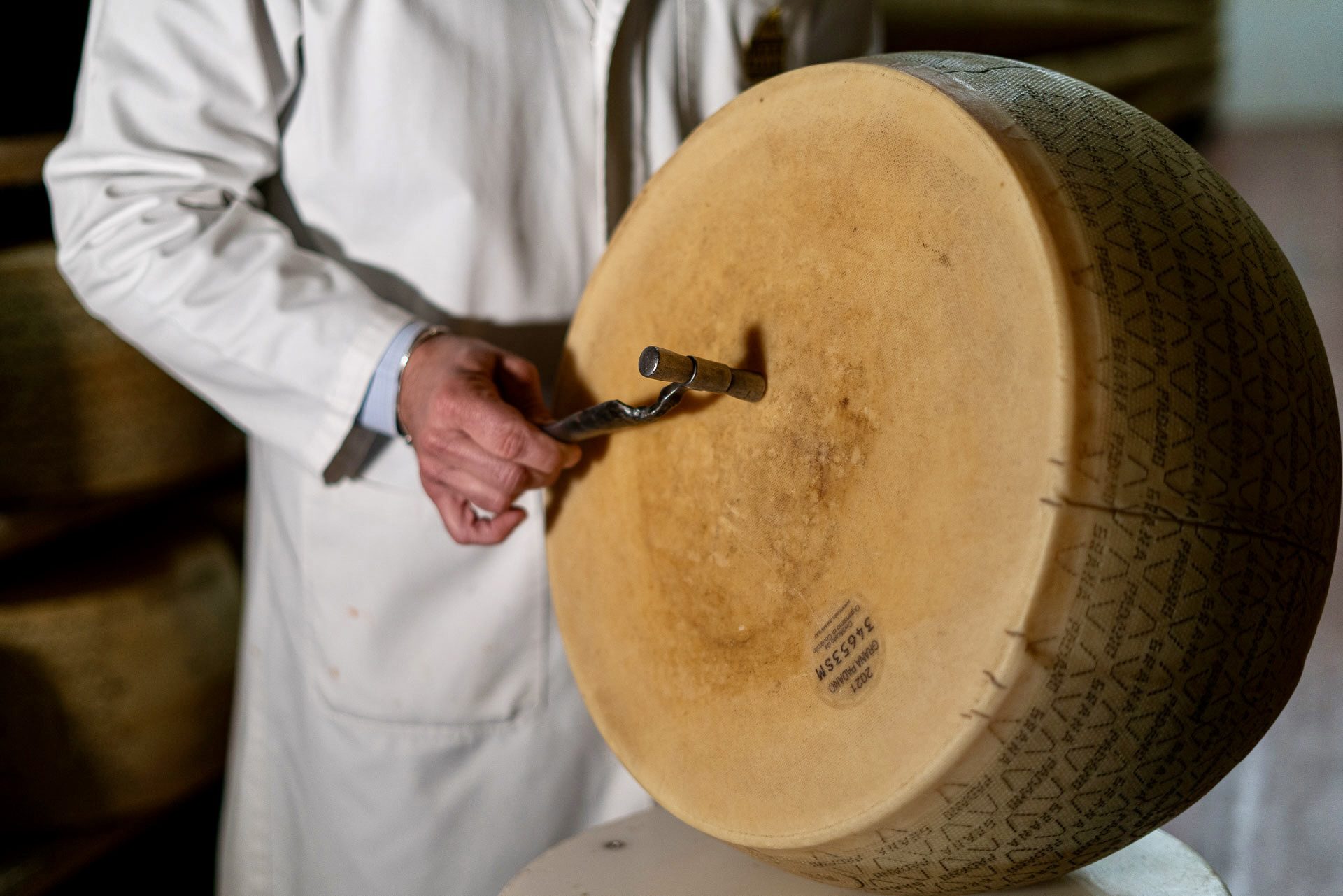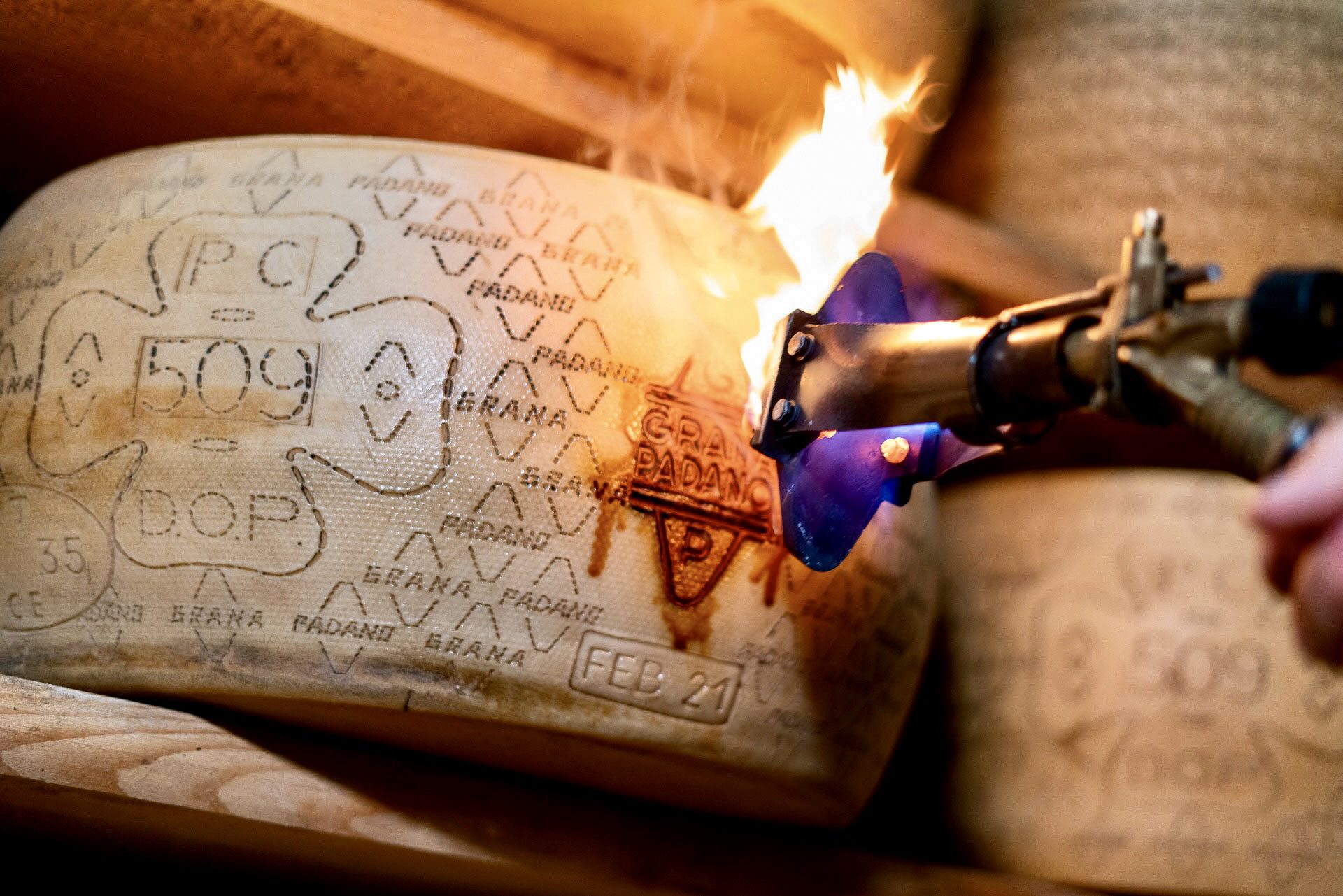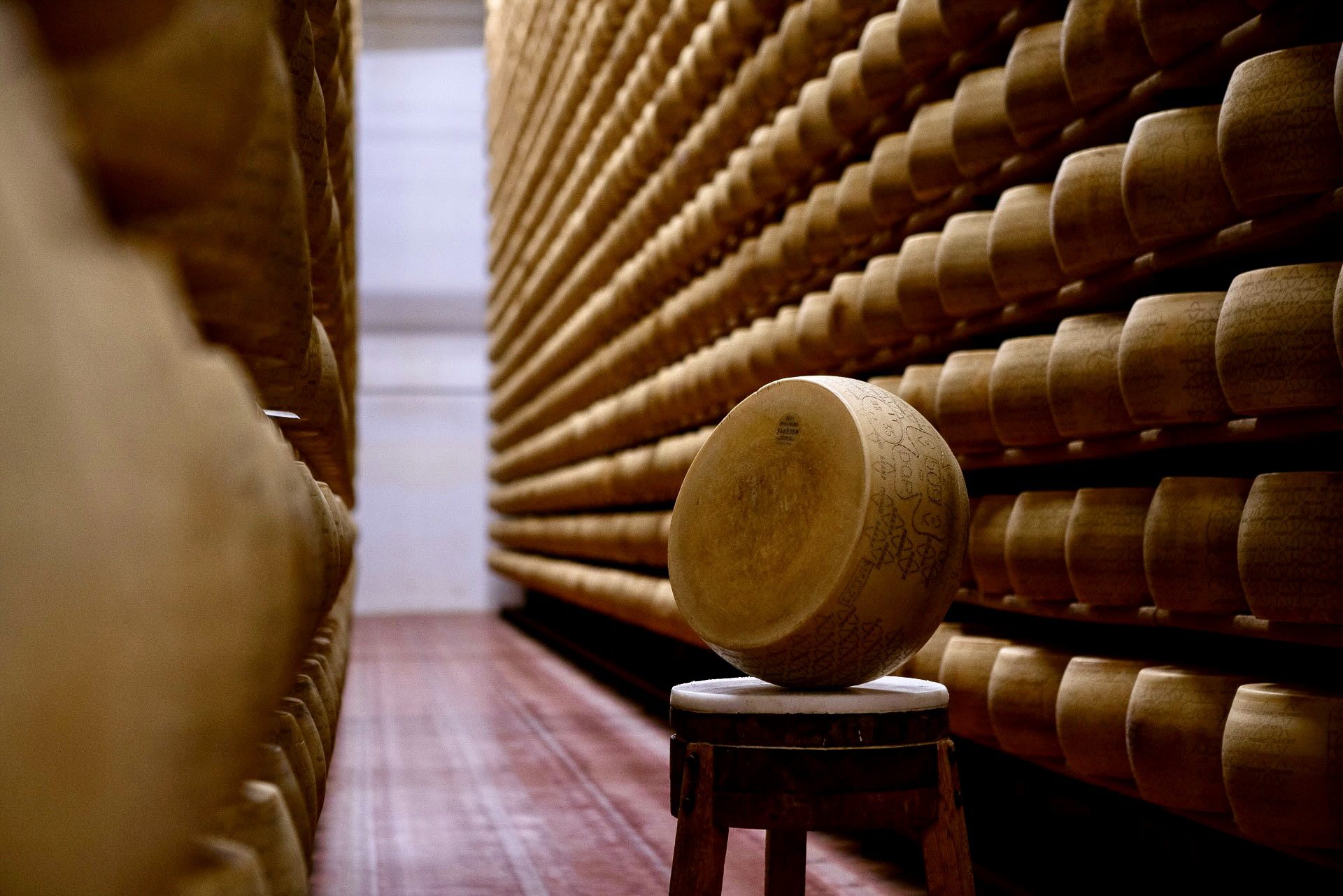

storia e proprietà
Grana Padano
The story goes that grana cheese from the Po Valley was born in 1135 in theabbey of Chiaravalle, a few kilometers south of Milan.
It was produced in special boilers inside monasteries, which can be considered the first dairies. The monks called it caseus vetus, old cheese.
The people, who were unfamiliar with Latin, gave it another name, derived from the particularity of the dough, which was firm but grainy. Thus was born the name grana cheese or more simply grana.
The most commonly cited granas are Lodesano or Lodigiano, considered by many to be the oldest, Milanese, Parmesan, Piacentino, and Mantuan.
The properties that distinguish this Italian cheese from any other cheese in the world are many, from how heavy the wheel weighs, to its unmistakable flavor and aroma.
Here are some of them:
- Grana Padano is made from milk, salt and rennet, to which lysozyme is added. Lysozyme is an enzyme with antibacterial action that occurs naturally in many organic substances including egg whites.
- It is an aged cheese with a delicate and fragrant flavor and aroma. The shape of the cheese is cylindrical, with a slightly convex or almost straight heel. The top and bottom surfaces are flat, with slightly hemmed edges.
- The colors of aged cheese are straw yellow or white for the paste and a natural or dark golden for the rind.
- The size should be between 35 and 45 cm in diameter, with a heel between 18 and 25 cm, depending on the production techniques followed.
- The weight of Grana Padano can never be less than 24kg and never more than 40kg.
- The crust should be between 4 and 8mm thick.
- The paste of the aged cheese is hard, finely grained, has a radial flake fracture and barely visible eyes.


Grana Padano PDO is a milk concentrate because it takes 1.5 liters of fresh milk from the Po Valley to make 100 grams of it.
The processing and aging of the cheese allows for a decrease in lipids,elimination of lactose, protein supply with the 9 essential amino acids, maximum bioavailability of minerals and vitamins, andhigh digestibility at all ages.
The average nutritional values and calories of Grana Padano PDO shown in the table below are to be considered stable over time, as the entire supply chain, from cattle feed to branding, is regulated by a strict Disciplinary that guarantees the PDO cheese.
As a result, the fluctuation in nutritional values and calories is minimal and insignificant for the purpose of establishing a balanced diet.
Nutritional values per 100g:
- calories: 398Kcal
- protein: 33g
- carbohydrates: 0g
- fats: 29g
- water: 32g

